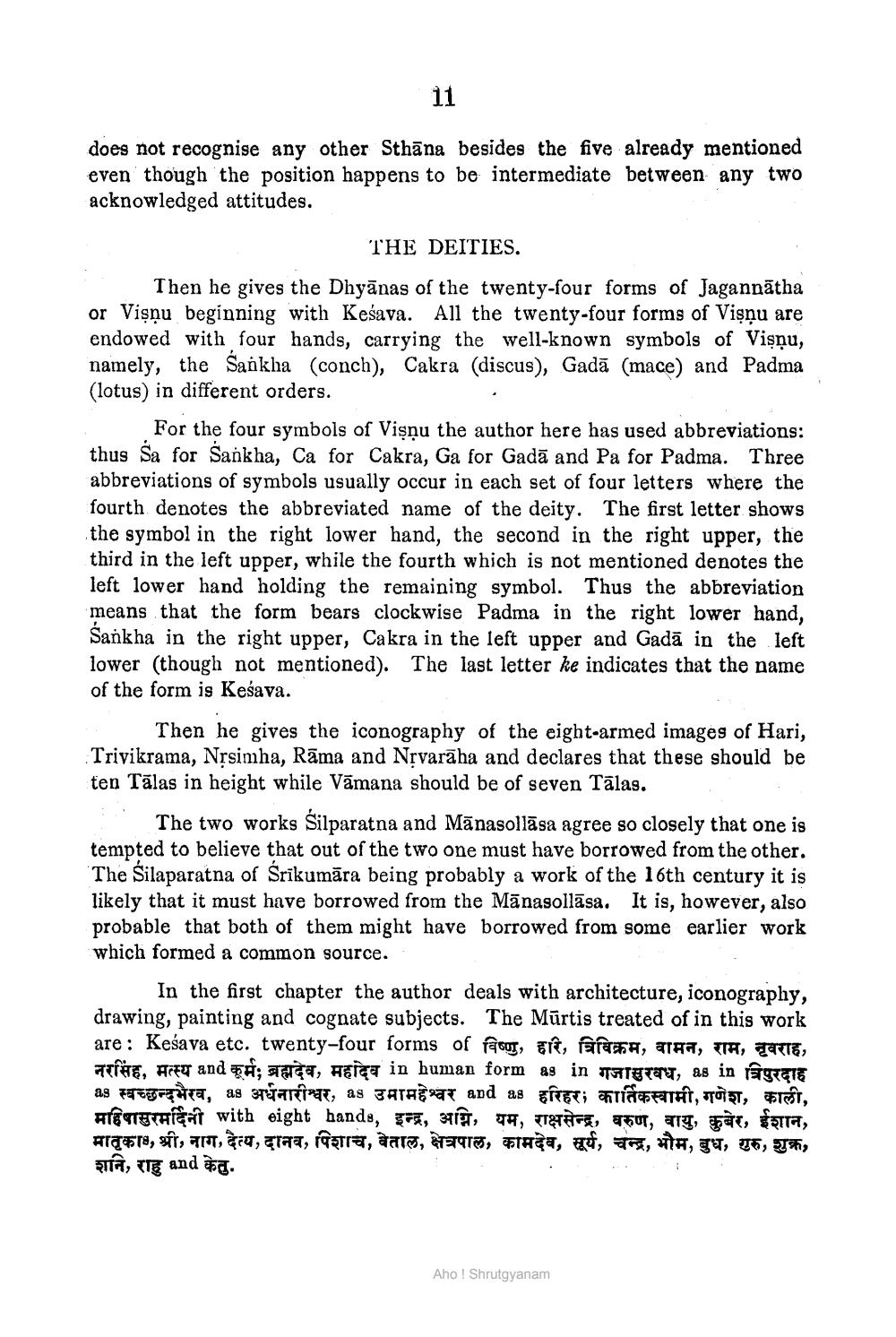________________
11
does not recognise any other Sthāna besides the five already mentioned even though the position happens to be intermediate between any two acknowledged attitudes.
THE DEITIES.
Then he gives the Dhyānas of the twenty-four forms of Jagannātha or Vişņu beginning with Keśava. All the twenty-four forms of Vişnu are endowed with four hands, carrying the well-known symbols of Vişņu, namely, the Sankha (conch), Cakra (discus), Gadā (mace) and Padma (lotus) in different orders.
For the four symbols of Vişņu the author here has used abbreviations: thus Sa for Sankha, Ca for Cakra, Ga for Gadā and Pa for Padma. Three abbreviations of symbols usually occur in each set of four letters where the
rth denotes the abbreviated name of the deity. The first letter shows the symbol in the right lower hand, the second in the right upper, the third in the left upper, while the fourth which is not mentioned denotes the left lower hand holding the remaining symbol. Thus the abbreviation means that the form bears clockwise Padma in the right lower hand, Sankha in the right upper, Cakra in the left upper and Gadā in the left lower (though not mentioned). The last letter ke indicates that the name of the form is Kesava.
Then he gives the iconography of the eight-armed images of Hari, Trivikrama, Nrsimha, Rāma and Nrvarāha and declares that these should be ten Tālas in height while Vāmana should be of seven Tālas.
The two works Silparatna and Mānasollāsa agree so closely that one is tempted to believe that out of the two one must have borrowed from the other. The Silaparatna of Srikumāra being probably a work of the 16th century it is likely that it must have borrowed from the Mānasollāsa. It is, however, also probable that both of them might have borrowed from some earlier work which formed a common source.
In the first chapter the author deals with architecture, iconography, drawing, painting and cognate subjects. The Mūrtis treated of in this work are : Keśava etc. twenty-four forms of facr, gift, er , area, TA, Tatia, ATE, AFFU and F; Ha, Agica in human form as in THTETUT, as in TETE as Taara, as starringt, as GATASIT and as gftat; filialas Fir T, TOET, * . AfgqEXreat with eight hands, 75, ST, TH, TETTE, OT, ay, Fr, 16A, ATT&T, sf, art , graa, rate, aats, 1979, FHC, 4, 5, H, TH, 75, 7, RITA, TE anda.
Aho ! Shrutgyanam




